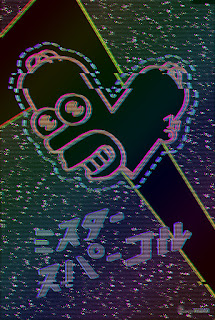 |
| S I M P S O N W A V E by Palm Treat |
Simpsonwave is a Joke That Music Journalism Isn't In On
I have never been one to read published rags like Rolling Stone Magazine or NME, although it is secretly one of my life goals to somehow end up in an issue of Rolling Stone Magazine. There is even that stupid song from the 70's about being on the cover of the Rolling Stone, or at least there is in Almost Famous.All of that jibberish aside, it occurs to me that it might actually be easier than I had previously imagined to get into Rolling Stone Magazine. I guess I shouldn't call them out specifically since a quick Google search didn't turn up their name in this embarrassing journalism faux pas, but if they were slightly less clueless they would also be doing their own flawed research into the subject. I'm talking, of course, about the joke that is Simpsonwave: the accidental joke on the music journalism industry that caught on instantly and which music bloggers and the like (see: theverge.com) have been feverishly reporting as though it is a real thing, I guess because of the fear of missing out on the next big thing.
No one wants to be the one to overlook the next Van Gogh, I guess, and in the digital age this fear of missing out (FOMA) has been amped up by the insular echo chamber of social media to insane levels. Insane to the point of representing a music genre suggested as a joke by an admin in a Simpson's Facebook meme page as the real deal. Google search it and it seems to be everywhere overnight: YouTube channels, every music blog ever, there's even a sub Reddit for it (/r/simpsonwave/). A Google search of the term makes it seem like a thriving and vibrant underground community that has exploded right under the noses of music snobs everywhere, literally overnight.
So, how does a pop artist like myself who slangs posters and websites for a living have any insight into a supposed music genre carelessly reported over and over by those smarter and more in the know as hard core fact, here to stay, sign of the times… wave of the future? Because I know who started the joke. I was there when he started the joke, I am also an admin in said Facebook meme group.
So how is that people who talk about music for a living are unable to drill down to the bottom, even a drill a little - hell, you don't have to drill very far - to figure out that a bunch of shitposters have pulled one over on them? I can only pose the question because I have no fucking clue, but it looks like my dream of being in Rolling Stone Magazine died while David Bowie's corpse is pretty much still warm to the touch. (But incredibly before Keith Richards)
By the way, you can shop for Palm Treat's dope art at palmtreat.design


